|
| |
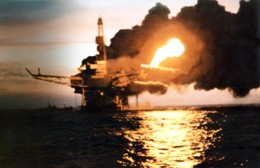 |
Slow Death in the Gulf
|
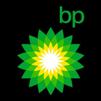 |
|
Six
Weeks and Counting - How can a major ecological event such as this oil spill
still be uncontrolled and spewing death to millions of living sea organisms?
Who is in charge? Who will be accountable?
 for our page of graphics,
text and videos.
for our page of graphics,
text and videos.
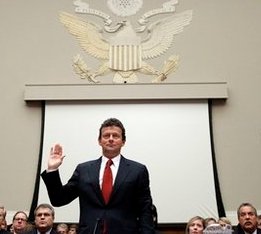
June
17,2010-
Two
Republican Congressmen called it Obama Blackmail
but they quickly had to retract their comments due
to pressure from their own party as Tony Hayward, BP
CEO took probably the most heated and sharp
questioning that a witness has ever endured at a
Congressional hearing today; however in the
end not much new information was revealed by BP.
CLICK HERE
for our News links page for up-to-date information from
major media sources.
|
TIME
LINE of EVENTS
|
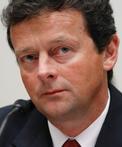 June
16, 2010- 20 Billion will be put in escrow by BP to be used and
deposited over a period of four years in accordance with a
meeting with President Obama and key BP officials. Chairman Tony
Hayward made a public apology to the United States for the
oil spill. June
16, 2010- 20 Billion will be put in escrow by BP to be used and
deposited over a period of four years in accordance with a
meeting with President Obama and key BP officials. Chairman Tony
Hayward made a public apology to the United States for the
oil spill. |
|
 June
15, 2010 - President Obama addressed the nation form the
Oval Office
for the first time in the worst emergency facing a US
President perhaps ever, as news began to leak out that
methane and
natural gas were building at the Deepwater Location
and perhaps 2.5 billion barrels of oil might eventually seep
out of the broken blown wellhead. Obama pledged massive
reconstruction of the
Gulf Coast
natural habitat. June
15, 2010 - President Obama addressed the nation form the
Oval Office
for the first time in the worst emergency facing a US
President perhaps ever, as news began to leak out that
methane and
natural gas were building at the Deepwater Location
and perhaps 2.5 billion barrels of oil might eventually seep
out of the broken blown wellhead. Obama pledged massive
reconstruction of the
Gulf Coast
natural habitat. |

|
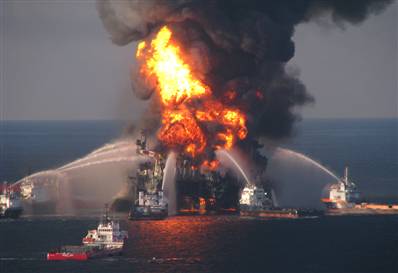 April
20, 2010 - Explosion and fire on Transocean Ltd's drilling rig
Deepwater Horizon licensed to BP; 11 workers missing, 17
injured. The rig was drilling in BP's Macondo project 42 miles
southeast of Venice, Louisiana, beneath about 5,000 feet of
water and 13,000 feet under the seabed. A blowout preventer,
intended to prevent release of crude oil, failed to activate. April
20, 2010 - Explosion and fire on Transocean Ltd's drilling rig
Deepwater Horizon licensed to BP; 11 workers missing, 17
injured. The rig was drilling in BP's Macondo project 42 miles
southeast of Venice, Louisiana, beneath about 5,000 feet of
water and 13,000 feet under the seabed. A blowout preventer,
intended to prevent release of crude oil, failed to activate. |
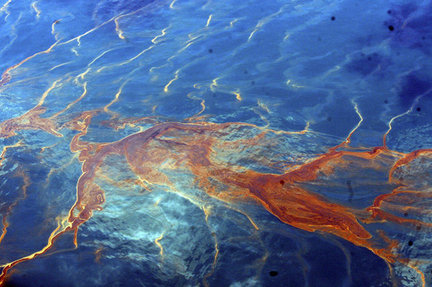 April
22 - The Deepwater Horizon rig, valued at more than $560
million, sink and a five mile long oil slick is seen. April
22 - The Deepwater Horizon rig, valued at more than $560
million, sink and a five mile long oil slick is seen. |
|
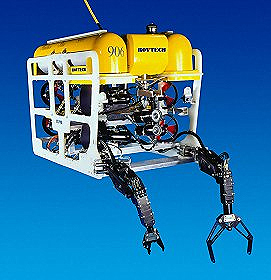 On April 24, 2010, remotely
operated vehicles (ROVs) inspected the capsized rig on the sea
floor and found two oil leaks from the well pipe along the sea
floor (at a depth of approximately 5,000 feet). The initial
estimate was that up to 1,000 barrels of oil a day could be
leaking into the water. This estimate was later revised to be at
least 5,000 barrels per day. On April 24, 2010, remotely
operated vehicles (ROVs) inspected the capsized rig on the sea
floor and found two oil leaks from the well pipe along the sea
floor (at a depth of approximately 5,000 feet). The initial
estimate was that up to 1,000 barrels of oil a day could be
leaking into the water. This estimate was later revised to be at
least 5,000 barrels per day. |
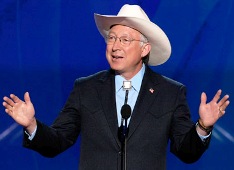 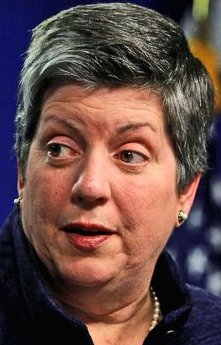 On April 27, 2010, Secretary
of Homeland Security Janet Napolitano and Secretary of
the Interior Ken Salazar signed an order establishing
the next steps for a joint investigation, currently
underway, into the causes of the explosion. The joint
investigation will have the power to issue subpoenas,
hold public hearings, call witnesses, and take other
steps needed to determine the cause of the incident. On April 27, 2010, Secretary
of Homeland Security Janet Napolitano and Secretary of
the Interior Ken Salazar signed an order establishing
the next steps for a joint investigation, currently
underway, into the causes of the explosion. The joint
investigation will have the power to issue subpoenas,
hold public hearings, call witnesses, and take other
steps needed to determine the cause of the incident.
|
|
 On April 29, 2010,
Secretary Napolitano declared the incident to be a “spill of
national significance,” enabling the appointment of a national
incident commander to coordinate response resources at the
national level. On April 29, 2010,
Secretary Napolitano declared the incident to be a “spill of
national significance,” enabling the appointment of a national
incident commander to coordinate response resources at the
national level. |
|
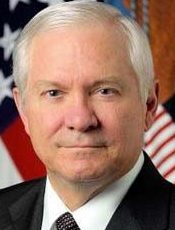 On April 30, 2010, Secretary of
Defense Robert M. Gates mobilized the Louisiana National Guard
to help in the ongoing efforts to assist local communities in
the cleanup and removal of oil and to protect critical habitats
from contamination. On April 30, 2010, Secretary of
Defense Robert M. Gates mobilized the Louisiana National Guard
to help in the ongoing efforts to assist local communities in
the cleanup and removal of oil and to protect critical habitats
from contamination. |
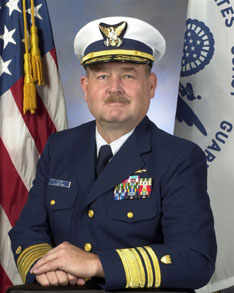 On May 1, 2010, Secretary
Napolitano named U.S. Coast Guard Commandant Admiral
Thad Allen the National Incident Commander for the
Administration's continued, coordinated response. On May 1, 2010, Secretary
Napolitano named U.S. Coast Guard Commandant Admiral
Thad Allen the National Incident Commander for the
Administration's continued, coordinated response.
|
 On May 2, 2010, BP began
drilling the first deep-water intercept relief well, which
is located a half-mile from the Macondo well, at a depth of
roughly 5,000 feet. This well will attempt to intercept the
existing wellbore at approximately 16,000 feet below the sea
floor. BP estimates this process will take at least 90 days. On May 2, 2010, BP began
drilling the first deep-water intercept relief well, which
is located a half-mile from the Macondo well, at a depth of
roughly 5,000 feet. This well will attempt to intercept the
existing wellbore at approximately 16,000 feet below the sea
floor. BP estimates this process will take at least 90 days.
|
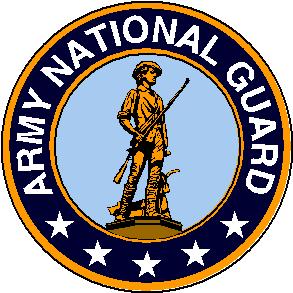 On May 4, 2010, the Pentagon
approved the federal mobilization of up to 17,500
National Guard troops to help various states with the
oil spill (up to 6,000 by Louisiana, 3,000 by Alabama,
2,500 by Florida and 6,000 by Mississippi). On May 4, 2010, the Pentagon
approved the federal mobilization of up to 17,500
National Guard troops to help various states with the
oil spill (up to 6,000 by Louisiana, 3,000 by Alabama,
2,500 by Florida and 6,000 by Mississippi).
|
|
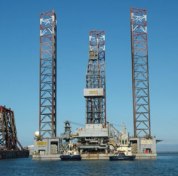 On May 5, BP announced that it
had stopped the flow of oil from one of the three existing leak
points on the damaged oil well and riser in the Gulf of Mexico,
although this action did not change the overall rate of the
leak. BP made plans to deploy the cofferdam, a 125-ton, 14’ x
24’ x 40’ structure to be set over the end of the riser. On May 5, BP announced that it
had stopped the flow of oil from one of the three existing leak
points on the damaged oil well and riser in the Gulf of Mexico,
although this action did not change the overall rate of the
leak. BP made plans to deploy the cofferdam, a 125-ton, 14’ x
24’ x 40’ structure to be set over the end of the riser. |
|
 On May 7, 2010, NOAA modified
and expanded the boundaries of the closed fishing area to better
reflect the current location of the oil spill. After having
deployed test applications of subsea dispersants, EPA halted
subsea dispersant operations, awaiting additional test results.
Secretary Salazar announced that no applications for new
drilling permits would go forward for any new offshore drilling
activity until the Department of the Interior completes the
safety review requested by President Obama. On May 7, 2010, NOAA modified
and expanded the boundaries of the closed fishing area to better
reflect the current location of the oil spill. After having
deployed test applications of subsea dispersants, EPA halted
subsea dispersant operations, awaiting additional test results.
Secretary Salazar announced that no applications for new
drilling permits would go forward for any new offshore drilling
activity until the Department of the Interior completes the
safety review requested by President Obama. |
|
 On May 8, 2010, BP announced
that while lowering the cofferdam over the riser, an excess of
hydrate crystals formed inside the dome, preventing the dome
from being successfully placed over the leaking riser. The dome
remains on the sea floor while BP evaluates current conditions. On May 8, 2010, BP announced
that while lowering the cofferdam over the riser, an excess of
hydrate crystals formed inside the dome, preventing the dome
from being successfully placed over the leaking riser. The dome
remains on the sea floor while BP evaluates current conditions. |
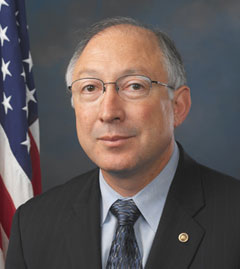 On May 11, 2010, Secretary
Salazar announced that he would restructure the Minerals
Management Service in order to establish a separate and
independent safety and environmental enforcement entity.
Secretary Salazar also announced that the Administration
would seek additional resources for federal inspectors,
request an independent, technical investigation of the
causes of the Deepwater Horizon spill from the National
Academy of Engineers, and request expanded authority to
review explorations plans. On May 11, 2010, Secretary
Salazar announced that he would restructure the Minerals
Management Service in order to establish a separate and
independent safety and environmental enforcement entity.
Secretary Salazar also announced that the Administration
would seek additional resources for federal inspectors,
request an independent, technical investigation of the
causes of the Deepwater Horizon spill from the National
Academy of Engineers, and request expanded authority to
review explorations plans. |
|
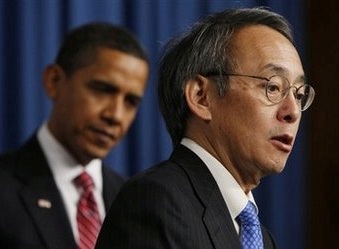 On May 12, 2010, Department of
Energy (DOE) Secretary Steven Chu traveled to Houston to
participate in meetings with DOE and national lab staff,
industry officials and other engineers and scientists involved
in finding solutions to cap the flow of oil and contain the
spill. On May 12, 2010, Department of
Energy (DOE) Secretary Steven Chu traveled to Houston to
participate in meetings with DOE and national lab staff,
industry officials and other engineers and scientists involved
in finding solutions to cap the flow of oil and contain the
spill. |
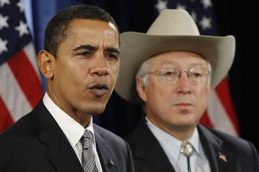 On May 14, 2010,
President Obama announced that he had ordered
Secretary Salazar to conduct a “top to bottom”
review of the Minerals Management Service. On May 14, 2010,
President Obama announced that he had ordered
Secretary Salazar to conduct a “top to bottom”
review of the Minerals Management Service.
|
 On May 15, 2010, Secretary
Napolitano and Secretary Salazar sent a letter to BP CEO
Tony Hayward reiterating that as a responsible party for
this event, BP is accountable to the American public for
the full costs of the cleanup of the spill and all
economic losses related to the spill. On May 15, 2010, Secretary
Napolitano and Secretary Salazar sent a letter to BP CEO
Tony Hayward reiterating that as a responsible party for
this event, BP is accountable to the American public for
the full costs of the cleanup of the spill and all
economic losses related to the spill.
|
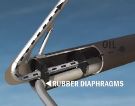 On May 16, 2010, a riser
insertion tube tool (RITT) was successfully tested
and inserted into the leaking riser, capturing some
oil and gas. BP estimates that it is currently
capturing slightly more than 2,000 barrels per day,
but that amount varies greatly day to day. On May 16, 2010, a riser
insertion tube tool (RITT) was successfully tested
and inserted into the leaking riser, capturing some
oil and gas. BP estimates that it is currently
capturing slightly more than 2,000 barrels per day,
but that amount varies greatly day to day.
|
 On May 17, 2010, a
second drill rig, Transocean’s Development Driller
II, began drilling a second relief well. On May 17, 2010, a
second drill rig, Transocean’s Development Driller
II, began drilling a second relief well.
|
 On May 19, 2010,
Secretary Salazar signed a secretarial order leading
to the fundamental restructuring of the Minerals
Management Service and the division of its three
missions into separate entities for leasing, safety
and revenue collection, with independent missions to
strengthen oversight of offshore energy operations. On May 19, 2010,
Secretary Salazar signed a secretarial order leading
to the fundamental restructuring of the Minerals
Management Service and the division of its three
missions into separate entities for leasing, safety
and revenue collection, with independent missions to
strengthen oversight of offshore energy operations.
In addition, Energy and
Environment Subcommittee Chairman Edward Markey
requested that BP immediately make publicly
available its live video feed of leak points and
undersea activities. |
 On May 20, 2010,
Secretary Napolitano announced that Admiral Allen
would remain as national incident commander for the
Administration’s continued, coordinated response to
the spill, even after stepping down from his post as
Coast Guard Commandant. In addition,
Secretary Napolitano and EPA
Administrator Lisa Jackson sent a letter
to BP CEO Tony Hayward stressing the
agency’s expectation that BP conduct all
actions in a transparent manner, with
all data and information related to the
spill readily available to the federal
government and the public. On May 20, 2010,
Secretary Napolitano announced that Admiral Allen
would remain as national incident commander for the
Administration’s continued, coordinated response to
the spill, even after stepping down from his post as
Coast Guard Commandant. In addition,
Secretary Napolitano and EPA
Administrator Lisa Jackson sent a letter
to BP CEO Tony Hayward stressing the
agency’s expectation that BP conduct all
actions in a transparent manner, with
all data and information related to the
spill readily available to the federal
government and the public.
The EPA also
issued a directive requiring BP to
identify and use a less toxic and more
effective dispersant from the list of
EPA-authorized dispersants. The
directive required BP to identify a less
toxic alternative – to be used both on
the surface and under the water at the
source of the oil leak – within 24
hours, and to begin using the less toxic
dispersant within 72 hours of submitting
the alternative.
 The Energy
and Commerce Committee posted a live
feed of the underwater leak at its
source, which was made available by BP
following Chairman Markey’s request. The Energy
and Commerce Committee posted a live
feed of the underwater leak at its
source, which was made available by BP
following Chairman Markey’s request.
|
 On May 22, 2010,
President Obama signed an executive order
establishing the bipartisan National Commission on
the BP Deepwater Horizon Oil Spill and Offshore
Drilling, with former Florida Governor and former
Senator Bob Graham, and former EPA Administrator
William K. Reilly, serving as co-chairs. The
commission is tasked with providing recommendations
on how to prevent, and mitigate the impact of, any
future spills that result from offshore drilling. On May 22, 2010,
President Obama signed an executive order
establishing the bipartisan National Commission on
the BP Deepwater Horizon Oil Spill and Offshore
Drilling, with former Florida Governor and former
Senator Bob Graham, and former EPA Administrator
William K. Reilly, serving as co-chairs. The
commission is tasked with providing recommendations
on how to prevent, and mitigate the impact of, any
future spills that result from offshore drilling.
|
 By May 23, 2010, more
than 1.73 million feet of containment boom and
730,000 feet of sorbent boom had been deployed to
contain the spill. Approximately 10.2 million
gallons of an oil-water mix had been recovered.
Approximately 785,000 gallons of total dispersant
had been deployed, 685,000 on the surface and
100,000 underwater. By May 23, 2010, more
than 1.73 million feet of containment boom and
730,000 feet of sorbent boom had been deployed to
contain the spill. Approximately 10.2 million
gallons of an oil-water mix had been recovered.
Approximately 785,000 gallons of total dispersant
had been deployed, 685,000 on the surface and
100,000 underwater. |
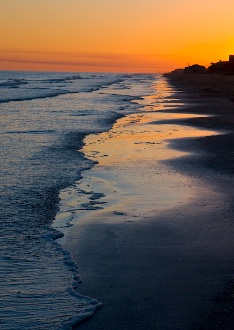 As of May 24, 2010,
approximately 65.6 miles of Louisiana shoreline have
been impacted by oil. In addition, Secretary
of Commerce Gary Locke declared a fisheries disaster
for commercial and recreational fisheries in the
Gulf of Mexico, as a result of the ongoing impacts
of the Deepwater Horizon oil spill. NOAA has closed
portions of the Gulf of Mexico to fishing based on
the trajectory of the spill since May 2, 2010. The
fisheries closure currently encompasses 19 percent
of federal waters in the Gulf of Mexico. As of May 24, 2010,
approximately 65.6 miles of Louisiana shoreline have
been impacted by oil. In addition, Secretary
of Commerce Gary Locke declared a fisheries disaster
for commercial and recreational fisheries in the
Gulf of Mexico, as a result of the ongoing impacts
of the Deepwater Horizon oil spill. NOAA has closed
portions of the Gulf of Mexico to fishing based on
the trajectory of the spill since May 2, 2010. The
fisheries closure currently encompasses 19 percent
of federal waters in the Gulf of Mexico.
|
|
 On Thursday, May 27, 2010 at
2:00 p.m. or immediately after the conclusion of the full
Committee hearing in room 2123 of the Rayburn House Office
Building, the Subcommittee on Energy and Environment will hold a
hearing entitled “Combating the BP Oil Spill.” This hearing will
examine the ongoing response to the oil spill at the Deepwater
Horizon drilling rig site, which is now spreading across the
Gulf of Mexico. On Thursday, May 27, 2010 at
2:00 p.m. or immediately after the conclusion of the full
Committee hearing in room 2123 of the Rayburn House Office
Building, the Subcommittee on Energy and Environment will hold a
hearing entitled “Combating the BP Oil Spill.” This hearing will
examine the ongoing response to the oil spill at the Deepwater
Horizon drilling rig site, which is now spreading across the
Gulf of Mexico. |

|
![]() for our page of graphics,
text and videos.
for our page of graphics,
text and videos.![]()
![]()


